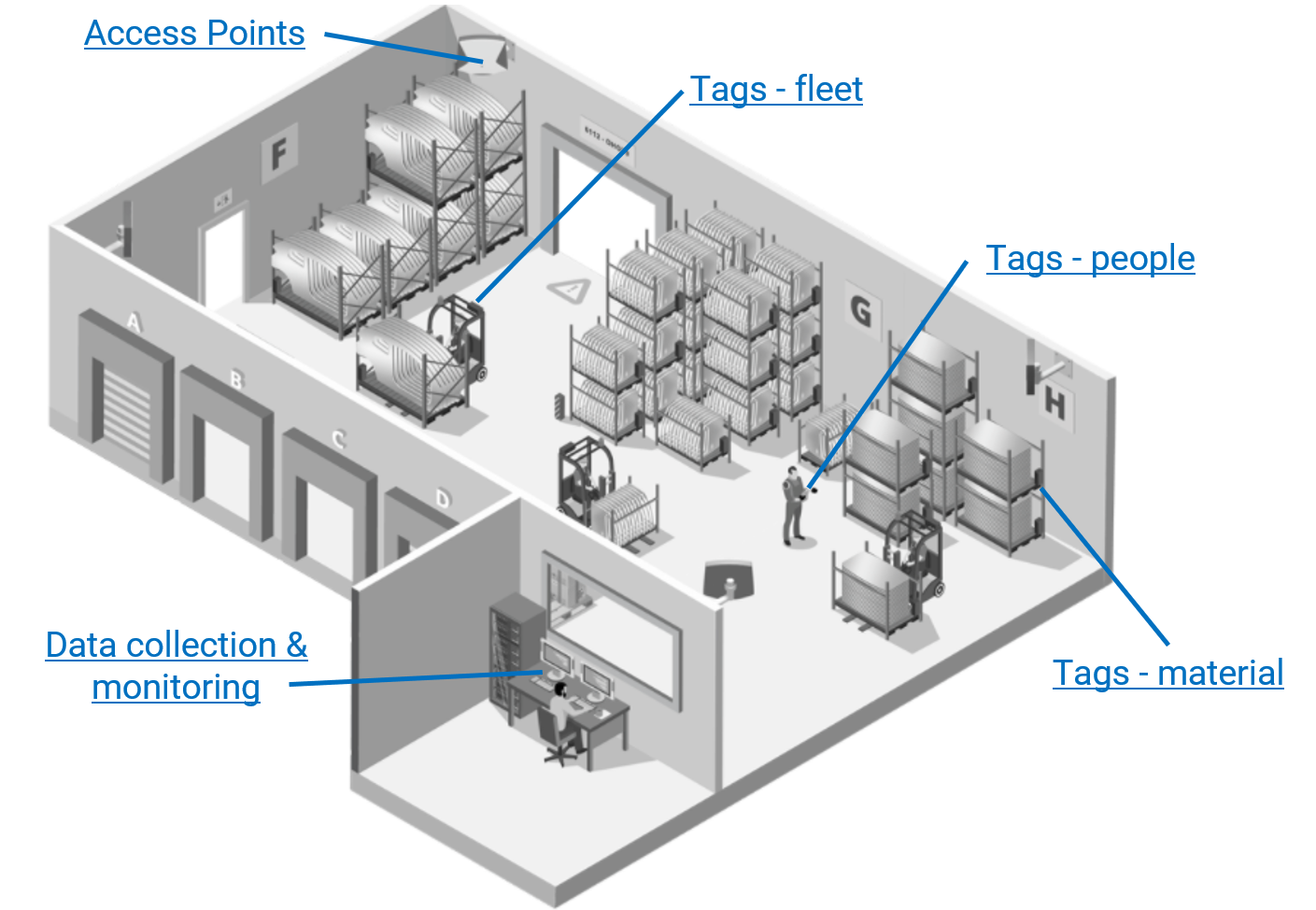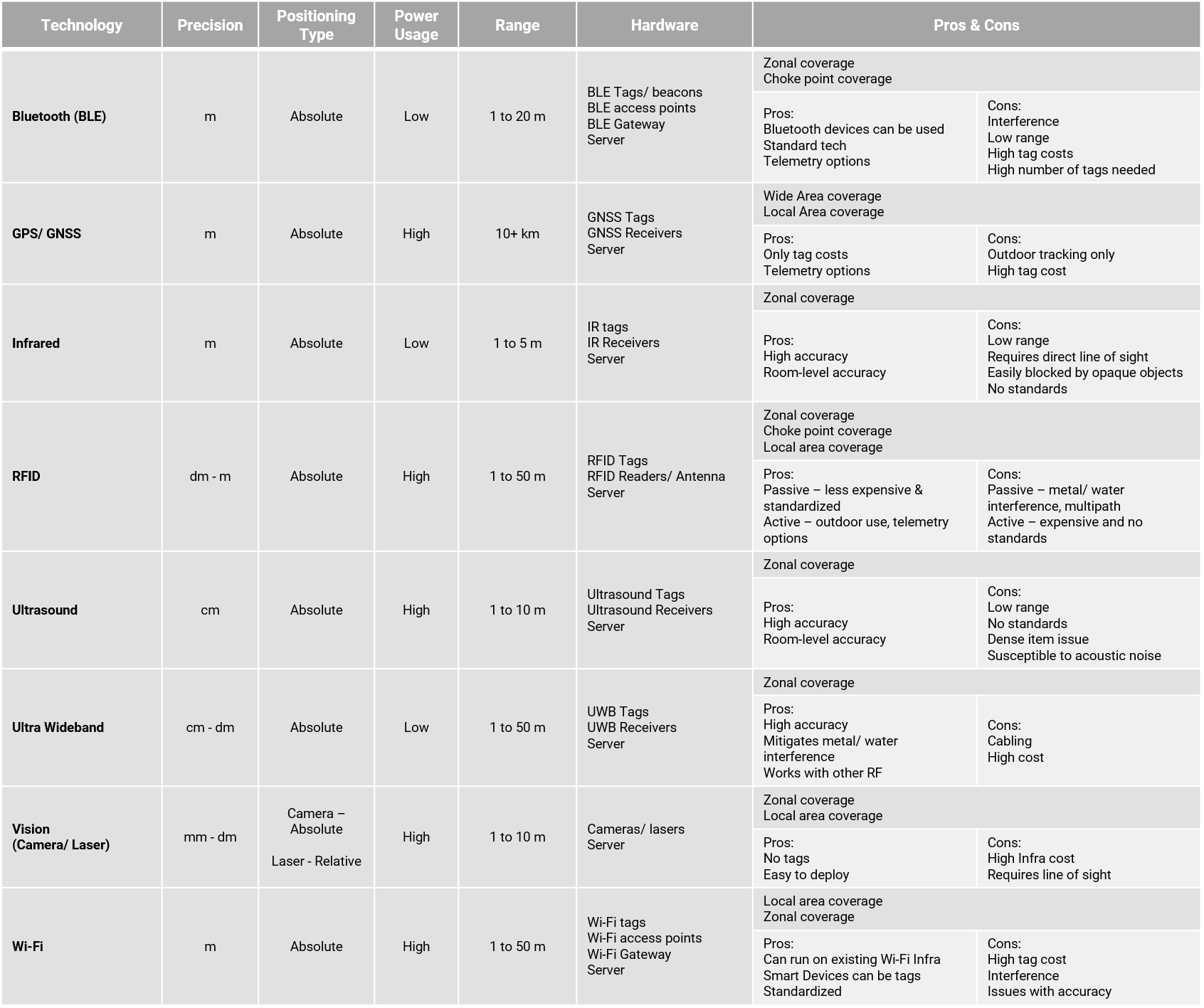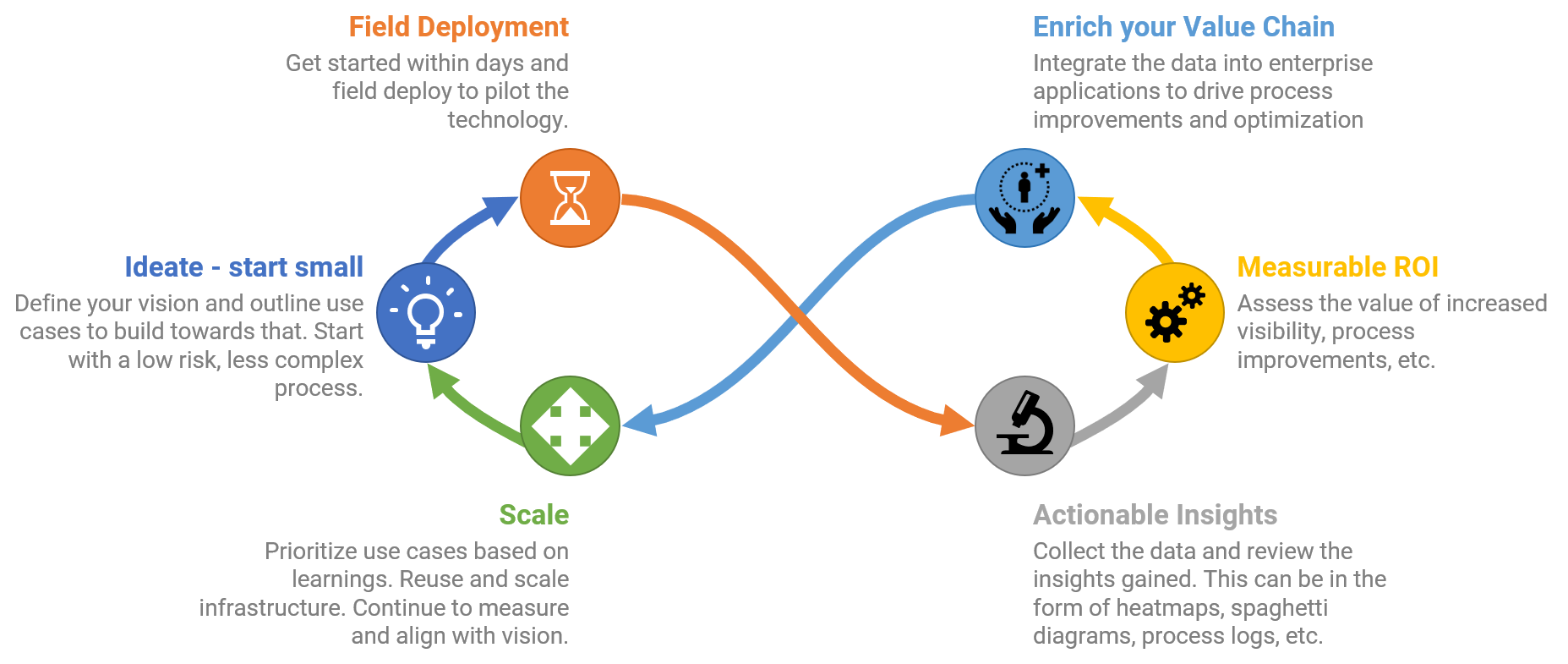
- An Real-time Location System (RTLS) is the key to digitize all asset movements in an industrial facility
- When implementing RTLS, the right technology must be considered per the application needs
- Potential to achieve a strong ROI within weeks of operation
- RTLS provides location data which delivers increased visibility, traceable insights, drive process improvements, and optimization.
What is RTLS?
Real-time location systems (RTLS) are used to identify and track location of objects or people in “real-time” within the contained area. Tags are attached to objects or worn by people. Fixed reference (access) points receive the signals from the tags to determine their location. In other words, an RTLS solution provides the enterprise with immediate information on precisely where something is and/or has been – and in some instances what it has done – via constant communication between the system and the object being tracked.
RTLS Components
RTLS consists of hardware (a tag, and a receiver) and software to manage the system (see schematic below). The hardware and software required are dependent on the complexity, chosen technology and scope of application.
The RTLS technology is usually some form of radio frequency (RF) communication. But some systems use optical or acoustic technology instead or in addition to RF.

Tags
Tags in use today are of various types based on the technology being used. These range from RFID tags, BLE beacons, Wi-Fi tags, GPS/ GNSS tags, IR tags, Ultrasound tags to Smart Devices. The tag receives the signal from a receiver. It then responds back with a unique ID or it can initiate the signal if it has its own power source.
Receiver
The receiver with a power source is connected to a network which enables transmission of signals from the tags. Data thus collected is then captured in back-end databases for further analysis. As with tags, based on the technology, one has several options for receivers ranging from Access Points, Readers, Location Sensors, Beacons, to Smart Devices.
The software has 3 layers – firmware which resides on the hardware, application software for configuration, monitoring and analysis, and middleware which connects the firmware with the software.
Coverage Options
Given the variations in the hardware and technology, the RTLS supports the options below:
- Wide Area coverage – locating an object on a global scale using global coordinates
- Local Area coverage – locating an object within a building or facility that is on the same network
- Zonal coverage – locating an object within a predefined zone by setting up hardware at intervals based on read range and read obstacles
- Choke Points – areas that objects must go through to conduct normal business (i.e., doorways, hallways, entrances/exits)
Technology Considerations
GPS remains the predominant technology for locating and tracking objects outdoors. For indoor, there are a variety of technologies available. These include radio-based, optical, magnetic and acoustic technologies. Each one has its advantages and disadvantages regarding accuracy, price, scalability, signal coverage, etc.
When implementing RTLS, the right technology must be chosen for the required application needs.
The comparison chart below provides a good summary of the RTLS technologies.

Use Cases for RTLS
A typical RTLS topology provides real-time visibility along with real-time planning, execution and reporting functions. Data from the RTLS can be integrated into downstream applications. Thus providing updates to processes such as warehouse management, production planning and scheduling, transportation planning, etc.
The inherent properties of an RTLS solution lends itself to a variety of use cases across various industries. Some of them include:
- Supply Chain Logistics – both inbound and outbound logistics and the tracking of the assets (e.g., containers, vehicles) used by these processes
- Asset Management – tracking, management and utilization of an asset
- Workforce Management – operational and compliance activities such as time/attendance, process compliance, time-on-task tracking and employee or object association
- Workplace Safety – management, assurance and compliance of safety and security your employees, such as worker safety, evacuation and emergency mustering
- Facilities Management – integration of sensors (like temperature, humidity) to monitor the physical environment of an object
- Maintenance Repair and Overhaul – adherence to standards/ requirements so an asset can perform its required function
Benefits of an RTLS
RTLS offers tremendous value to an enterprise. The increased visibility and data provided is invaluable and highly actionable. This enhances and streamlines operations and processes across the value chain. Some of the benefits include:
- Operational excellence – process streamlining and efficiencies lead to increased productivity, reduction in operational costs, better utilization and increased reliability
- Actionable insights – faster and more efficient information distribution enables actionable employees to react quicker
- Effective sustainment and compliance – ability to leverage information from objects being monitored to support MRO activities
- New opportunities – RTLS is a data rich environment and new offerings/ benefits can be offered to customers.
- Competitive advantage – more efficient operations, cost reductions, better decision making and new dynamic offerings to customers ensure a competitive advantage
The RTLS advantage is further enhanced as the solution continues to penetrate the rest of the enterprise and value chain.
Getting started
